via Flickr/NCinDC
Let’s not beat around the bush: no one has time to make every single thing from scratch. And even if you did, maybe you’d rather do other things, because you have, you know, a life. Here are ten foods you should never feel guilty about buying ready-made, because the store versions are actually really good, and sometimes even excellent.
1. Puff Pastry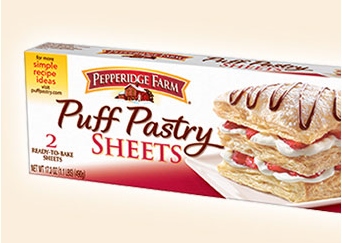
Puff pastry is one those magical airy buttery concoctions that class up everything from a humble apple turnover to a fancy beef Wellington. But making it is ridiculously labor intensive. You start with a dough, roll it into a thin rectangle, then add a smaller, equally thin rectangle of cold butter. Then you have to fold the dough over the butter, and roll it out again to its original size. You repeat this at least two more times with 30-minute breaks in between each turn.
The butter has to be solid but pliable, or else you get a greasy mess. The solidity makes it hard work to roll, but you can’t have too heavy a hand, or the pastry gets tough. It’s really fun when the butter breaks through the dough, and you have to patch it.
Tired yet?
If you still crave that turnover, go for the frozen prepackaged variety. Just thaw, fill, chill and bake. Pepperidge Farms is the most popular (it’s also vegan—surprise!), but you can find other varieties. Trader Joe’s makes a good one.
2. Hollandaise Sauce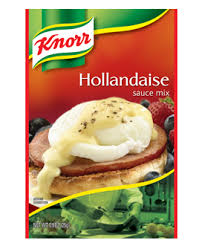
This egg-and-butter emulsion, flavored with lemon juice, is most commonly found topping eggs Benedict. The French consider it a mother sauce, which means you use the same basic ingredients and technique but swap out flavors. For example, Béarnaise sauce uses tarragon vinegar instead of lemon juice.
But Hollandaise is also a mother to make. You start with egg yolks and lemon juice over a water bath, and slowly, slowly whisk in butter until the sauce thickens. If the heat is too high, the eggs scramble. If you don’t whisk the mixture just right, it separates. It also has to be served immediately or held warm in a thermos, and so cannot be chilled or made very far in advance.
Luckily, there are packet mixes (Knorr is the most familiar.) Not only are they way more forgiving to make, but there’s not a lot of flavor difference, especially if you add some fresh lemon juice. Would I serve it in a fancy restaurant? No. But for a quick eggs Benedict on a Sunday after a night of revelry, or with salmon in an otherwise complicated meal? Definitely. They also freeze well. Who could ask for more?
3. Pasta
Don’t get me wrong: Fresh pasta, especially homemade, is delicious. But the amount of time it takes to make it—between mixing the dough, rolling it and cutting it—simply isn’t worth it. And if you want to dry it for longer storage, it’s even more complicated. That’s why even in Italy, where pasta tends to be part of at least one meal a day, people are way more likely to buy it than make it unless it’s for a special holiday meal. And while most Italians have a source for the best fresh pasta, they aren’t above the commercially dried stuff. Why do you think Barilla is so popular? Save your precious time for the sauces and leave the pasta maker on the shelf at the store.
4. Mashed Potatoes
This may seem ridiculous, but I hate peeling potatoes. It takes forever, especially when they are knobbly or funky-shaped. Then, there’s the chopping, the boiling, the draining, the mashing. To add insult to injury, they get gluey and dry out on top very quickly no matter how much buttered plastic wrap I stick on.
Only Thanksgiving and Christmas are worth that kind of a pain. Otherwise, it’s all about the powdered kind. I prefer the plain variety, which is available in a big box and can be customized with flavors from fresh cheese to crushed garlic to bacon bits. Or just plain, smothered in homemade gravy.
5. Phyllo Dough
You thought puff pastry was time-consuming? Try phyllo, where the dough is so thin it’s practically transparent. There’s a reason its name comes from the Greek word for leaf.
Making phyllo involves continuous rolling, and to complicate matters, each sheet tears so easily you have to be really careful.
Sure, there are people who make their own phyllo. Most Greeks I’ve met have at least one yiayia who made phyllo back in her village. But most just buy it for their baklava and spanakopita.
Even if you buy the prepared version, there’s still work involved, since you have to brush each sheet with melted butter. So there’s no need to feel lazy for taking this shortcut.
6. Chicken, Beef or Seafood Stock 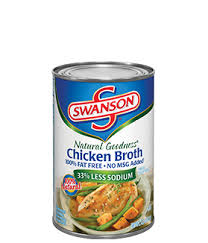
There is no shortage of articles telling you how great homemade stock is, and I won’t argue with that, because it usually tastes good. But frankly, boiling some leftover bones with onion and celery tops for hours is not my idea of a good time. Maybe it’s the skimming. Maybe it’s the straining. Maybe it’s the tending, because leaving the pot alone for a few hours while catching up on Orange is the New Black resulted in a nasty burnt mess because the heat was apparently a little higher than I thought. Or maybe it’s the needing to find space in the fridge and freezer, when I have more room in the pantry from cardboard boxes of pre-made stock.
7. Baguettes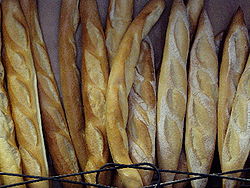
Considering how few ingredients go into this classic French bread – flour, water, yeast and salt – you’d think this would be easy to make. But no. Making a baguette you’d be proud to hold under your arm while riding a bike and wearing a beret involves multiple steps and a whole hell of a lot of kneading, and shaping, and resting before it even goes into the oven. And once it’s in the oven, you have to make sure you have a steaming skillet of water in there with it (though some people swear by spraying down the oven walls every so often). There’s a reason why people bake them professionally – it’s a real art.
8. Tomato Paste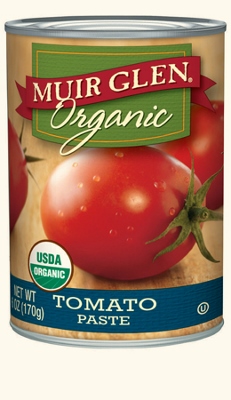
This pantry staple is as much of a base for soups and sauces as the above-mentioned stock, but even more complicated to make. You start by boiling the tomatoes to get the peel off, then puree them, then bake them about four hours with constant supervision and stirring and shifting pans around. You also need a large amount of tomatoes – 10 pounds for three cups – to make it. Then there’s preserving. You can freeze the paste, but your best bet is to can it. All this for three cups of paste?
9. Ice Cream and Sorbet
This is kind of a toss-up, because homemade ice cream or sorbet, freshly churned, can be worth the effort. But especially for sorbet, freshly churned is key. Since most home recipes don’t have a softening agent and home ice cream makers don’t churn in much air, your sorbet will turn into a pint-size ice pop after a few hours, so it doesn’t store well. And if you’re making true ice cream (that means no egg yolks), not custard, you’ll get a similar result, since the eggs act as softeners in most custard recipes.
Also, most home machine machines make a quart and a half at most, so if you’re looking to have an ice cream party, you’ll need to wait about 24 hours between making flavors for the insert to refreeze.
Just get a pint of premium at the market and be done.
10. Sausage
There’s that old adage about not wanting to know how the sausage is made, but frankly, most of us would likely prefer to know there aren’t too many weird body parts or chemicals in that breakfast link next to our scrambled eggs.
One solution is to make your own, and then you can control everything from meat to salt to spices. Some stand mixers even offer a meat grinding attachment.
But grinding’s not the issue. The biggest chore in sausage making is getting the meat into the casings without tearing them. That needs special equipment. Then, there’s smoking and curing certain types of sausages, which involves climate-controlled spaces and more special equipment. And again, storage, since your fresh sausages presumably don’t contain preservatives, so make room in your fridge and eat them as soon as possible, or clear out some freezer space.
A trusted butcher or artisanal sausage maker might be your best bet.
A.K. Whitney is freelance journalist in Southern California. She spent more than a decade as a food editor and columnist for the Los Angeles News Group. You can follow her on Twitter @AKWhitney.